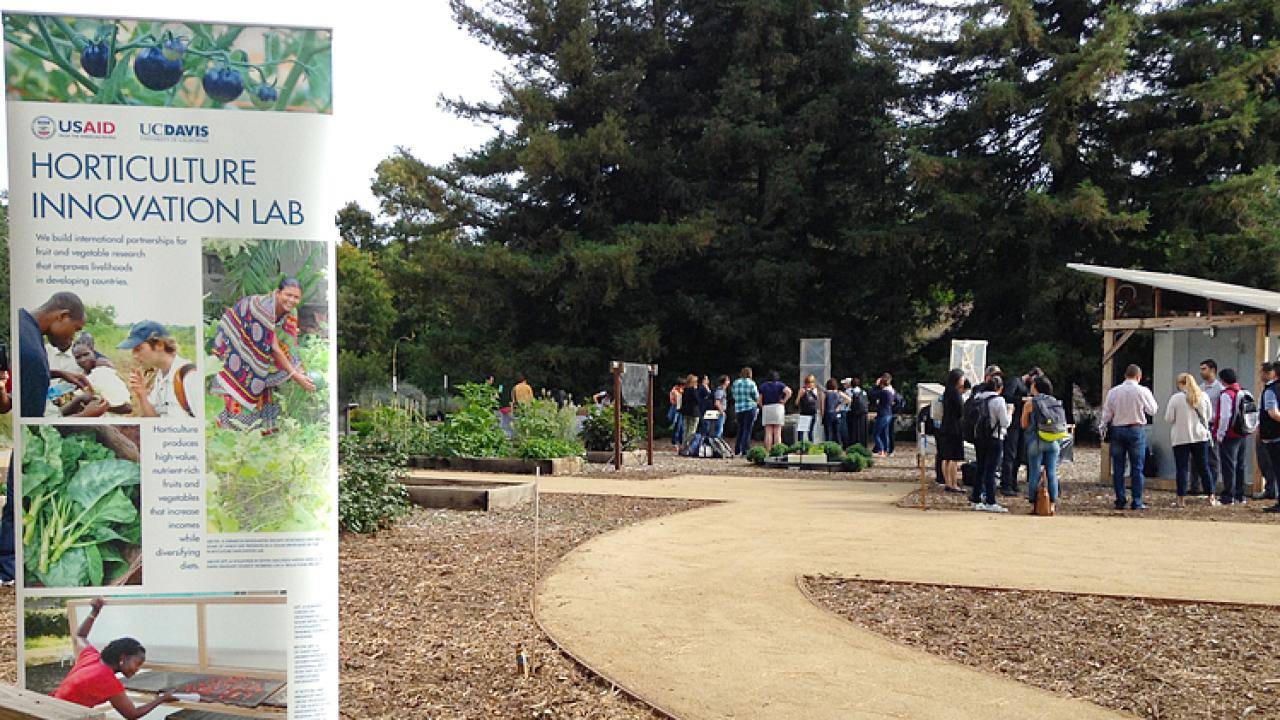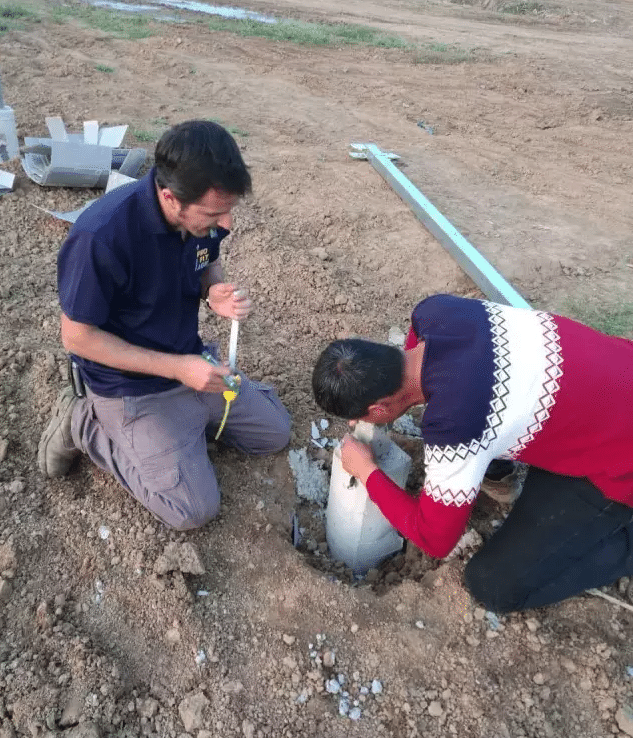Innovation is more important in modern agriculture than ever before. The industry as a whole is facing huge challenges, from rising costs of supplies, a shortage of labor, and changes in consumer preferences for transparency and sustainability. There is increasing recognition from agriculture corporations that solutions are needed for these challenges. In the last 10 years, agriculture technology has seen a huge growth in investment, with $6.7 billion invested in the last 5 years and $1.9 billion in the last year alone. Major technology innovations in the space have focused around areas such as indoor vertical farming, automation and robotics, livestock technology, modern greenhouse practices, precision agriculture and artificial intelligence, and blockchain.
- Agriculture Innovation Center Demonstration Programs
- Agriculture Innovation Center Demonstration Program Center
Agriculture is changing. The Chemeketa Agriculture Complex will serve as a hub to expand classes and facilities to better meet the training needs of farms and nurseries in our region. Planned Features of the complex will include-Shared spaces and resources for partners, programs and community; Greenhouse; Woody ornamental, pollinator and soil labs.
- Greenworks of Lexington project, spearheaded by Flywheel and Southern Cross Management, has been approved by the city of Lexington to continue development. The facility is expected to open in 2022.
- The 2002 farm bill (P.L. 6402) directed the USDA to provide grants and to assist in the establishment of Agriculture Innovation Centers that provide information, training and direct assistance to agricultural producers in the production, processing, development and marketing of value-added agricultural commodities and products.
- The Answer Plot® Program is a premier research and demonstration resource that has produced more than 5 million data points and one of the industry's most extensive data sets. Product performance is tested and proven in replicated field trials at nearly 200 Answer Plot® locations.
- (c) Establishment of Program The Secretary shall establish a demonstration program, to be known as the 'Agriculture Innovation Center Demonstration Program' under which the Secretary shall— (1).
Agriculture Innovation Center Demonstration Programs
Indoor Vertical Farming

Indoor vertical farming can increase crop yields, overcome limited land area, and even reduce farming's impact on the environment by cutting down distance traveled in the supply chain. Indoor vertical farming can be defined as the practice of growing produce stacked one above another in a closed and controlled environment. By using growing shelves mounted vertically, it significantly reduces the amount of land space needed to grow plants compared to traditional farming methods. This type of growing is often associated with city and urban farming because of its ability to thrive in limited space. Vertical farms are unique in that some setups don't require soil for plants to grow. Most are either hydroponic, where vegetables are grown in a nutrient-dense bowl of water, or aeroponic, where the plant roots are systematically sprayed with water and nutrients. In lieu of natural sunlight, artificial grow lights are used.
Vertical farms use up to 70% less water than traditional farms.
From sustainable urban growth to maximizing crop yield with reduced labor costs, the advantages of indoor vertical farming are apparent. Vertical farming can control variables such as light, humidity, and water to precisely measure year-round, increasing food production with reliable harvests. The reduced water and energy usage optimizes energy conservation -- vertical farms use up to 70% less water than traditional farms. Labor is also greatly reduced by using robots to handle harvesting, planting, and logistics, solving the challenge farms face from the current labor shortage in the agriculture industry.
Farm Automation
Farm automation, often associated with 'smart farming', is technology that makes farms more efficient and automates the crop or livestock production cycle. An increasing number of companies are working on robotics innovation to develop drones, autonomous tractors, robotic harvesters, automatic watering, and seeding robots. Although these technologies are fairly new, the industry has seen an increasing number of traditional agriculture companies adopt farm automation into their processes.
Download mastering keygen pro free rubackup. 64-bit 2018 2019 analog au bass best DAW delay Download easy Editor edm eq fm free free. download full fx help high sierra hip hop izotope MAC mastering microsoft mixing mojave native instruments osx os x plugin Plugins release reverb sine sound design studio synth synthesizer techno trance vst.

New advancements in technologies ranging from robotics and drones to computer vision software have completely transformed modern agriculture. The primary goal of farm automation technology is to cover easier, mundane tasks. Some major technologies that are most commonly being utilized by farms include: harvest automation, autonomous tractors, seeding and weeding, and drones. Farm automation technology addresses major issues like a rising global population, farm labor shortages, and changing consumer preferences. The benefits of automating traditional farming processes are monumental by tackling issues from consumer preferences, labor shortages, and the environmental footprint of farming.
Livestock Farming Technology

Indoor vertical farming can increase crop yields, overcome limited land area, and even reduce farming's impact on the environment by cutting down distance traveled in the supply chain. Indoor vertical farming can be defined as the practice of growing produce stacked one above another in a closed and controlled environment. By using growing shelves mounted vertically, it significantly reduces the amount of land space needed to grow plants compared to traditional farming methods. This type of growing is often associated with city and urban farming because of its ability to thrive in limited space. Vertical farms are unique in that some setups don't require soil for plants to grow. Most are either hydroponic, where vegetables are grown in a nutrient-dense bowl of water, or aeroponic, where the plant roots are systematically sprayed with water and nutrients. In lieu of natural sunlight, artificial grow lights are used.
Vertical farms use up to 70% less water than traditional farms.
From sustainable urban growth to maximizing crop yield with reduced labor costs, the advantages of indoor vertical farming are apparent. Vertical farming can control variables such as light, humidity, and water to precisely measure year-round, increasing food production with reliable harvests. The reduced water and energy usage optimizes energy conservation -- vertical farms use up to 70% less water than traditional farms. Labor is also greatly reduced by using robots to handle harvesting, planting, and logistics, solving the challenge farms face from the current labor shortage in the agriculture industry.
Farm Automation
Farm automation, often associated with 'smart farming', is technology that makes farms more efficient and automates the crop or livestock production cycle. An increasing number of companies are working on robotics innovation to develop drones, autonomous tractors, robotic harvesters, automatic watering, and seeding robots. Although these technologies are fairly new, the industry has seen an increasing number of traditional agriculture companies adopt farm automation into their processes.
Download mastering keygen pro free rubackup. 64-bit 2018 2019 analog au bass best DAW delay Download easy Editor edm eq fm free free. download full fx help high sierra hip hop izotope MAC mastering microsoft mixing mojave native instruments osx os x plugin Plugins release reverb sine sound design studio synth synthesizer techno trance vst.
New advancements in technologies ranging from robotics and drones to computer vision software have completely transformed modern agriculture. The primary goal of farm automation technology is to cover easier, mundane tasks. Some major technologies that are most commonly being utilized by farms include: harvest automation, autonomous tractors, seeding and weeding, and drones. Farm automation technology addresses major issues like a rising global population, farm labor shortages, and changing consumer preferences. The benefits of automating traditional farming processes are monumental by tackling issues from consumer preferences, labor shortages, and the environmental footprint of farming.
Livestock Farming Technology
Agriculture Innovation Center Demonstration Program Center
The traditional livestock industry is a sector that is widely overlooked and under-serviced, although it is arguably the most vital. Livestock provides much needed renewable, natural resources that we rely on every day. Livestock management has traditionally been known as running the business of poultry farms, dairy farms, cattle ranches, or other livestock-related agribusinesses. Livestock managers must keep accurate financial records, supervise workers, and ensure proper care and feeding of animals. However, recent trends have proven that technology is revolutionizing the world of livestock management. New developments in the past 8-10 years have made huge improvements to the industry that make tracking and managing livestock much easier ands environment as statistical data that can be understood and useful to farmers for decision-making. Algorithms process the data, adapting and learning based on the data received. The more inputs and statistical information collected, the better the algorithm will be at predicting a range of outcomes. And the aim is that farmers can use this artificial intelligence to achieve their goal of a better harvest through making better decisions in the field.
Ramayanaall about myths. Los ramones demasiado duros para morir pdf download free.
Our Food accelerator program runs twice a year boosting our startups through corporate business development, networking and pitch events, world-class mentorship, and the potential for investment.
